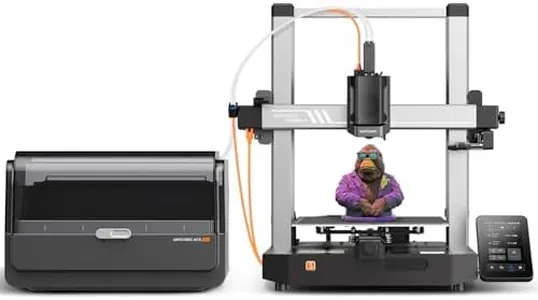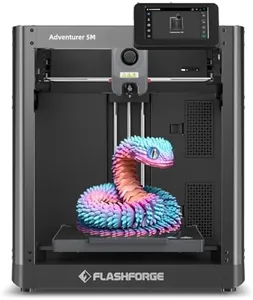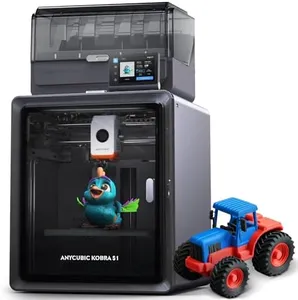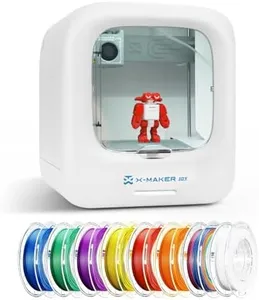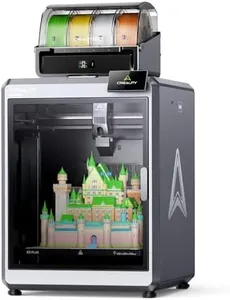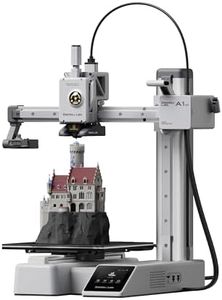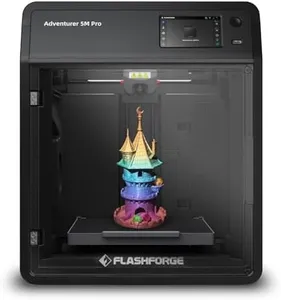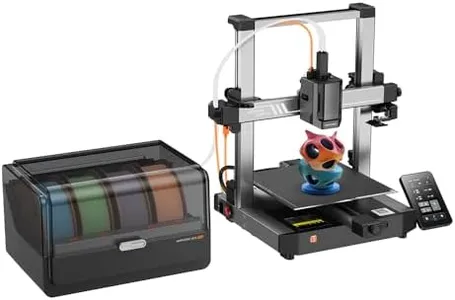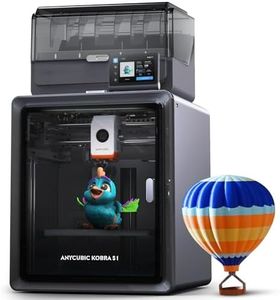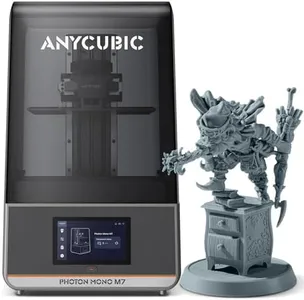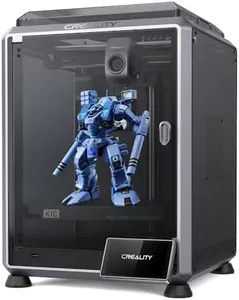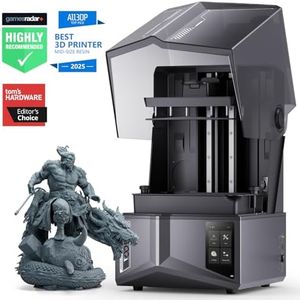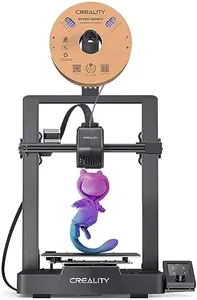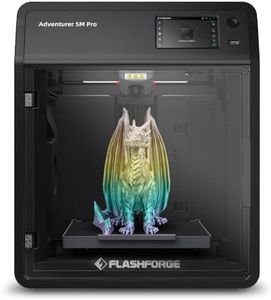10 Best 3D Printers 2025 in the United States
Our technology thoroughly searches through the online shopping world, reviewing hundreds of sites. We then process and analyze this information, updating in real-time to bring you the latest top-rated products. This way, you always get the best and most current options available.

Our Top Picks
Winner
FLASHFORGE Adventurer 5M 3D Printer with Fully Auto Leveling, Max 600mm/s High Speed Printing, 280°C Direct Extruder with 3S Detachable Nozzle, Core XY All Metal Structure, Print Size 220x220x220mm
Most important from
2418 reviews
The FLASHFORGE Adventurer 5M 3D Printer offers several appealing features for users looking for a combination of speed, ease of use, and print quality. One of its standout strengths is the fully automatic leveling, which simplifies the setup process and ensures consistent print quality. This is particularly beneficial for those who might not have much experience with 3D printing and want to avoid the hassle of manual adjustments.
The high-speed printing capability (up to 600mm/s) with a sturdy Core XY structure and quick nozzle changes make it an excellent choice for rapid prototyping and mass production. The ability to print with various materials like PLA, ABS, PETG, and TPU adds to its versatility. However, for materials like PC and ASA, an enclosed enclosure is needed, which may require additional investment. The real-time monitoring via the mobile app is a convenient feature, allowing users to keep track of their prints remotely and make adjustments on the fly.
With a decent build volume of 220x220x220mm, it accommodates a good range of project sizes. On the downside, the printer's weight (23.8 pounds) and dimensions make it relatively bulky, which might be a consideration for those with limited space. In essence, the FLASHFORGE Adventurer 5M is well-suited for users seeking high-speed, high-quality prints with minimal manual intervention, making it ideal for both beginners and advanced users in creative and industrial settings.
Most important from
2418 reviews
Anycubic Kobra S1 Combo 3D Printer, Multi-Color 3D Printer High Speed Max 600mm/s High Precision, Core XY Stable Structure Ultra-Quiet Printing Anycubic App One-Click Printing 250 * 250 * 250mm
Most important from
1257 reviews
The Anycubic Kobra S1 Combo 3D Printer offers a range of impressive features that make it a strong contender in the 3D printing market. One of its standout capabilities is multi-color printing, supporting up to four colors, with the potential to expand to eight colors with an additional unit. This feature can save time and effort in post-processing tasks like painting. The printer's build volume of 250 x 250 x 250mm is suitable for a variety of projects, providing ample space for most prints.
The high-speed printing capability, with a maximum speed of 600mm/s and up to 20,000 mm/s² acceleration, is a significant advantage, reducing print times considerably without sacrificing precision. The flow correction feature further enhances printing accuracy by ensuring smoother surfaces and minimizing material overflow at the corners, which is beneficial for achieving high-quality prints. The inclusion of an integrated filament dryer also adds to the efficiency, allowing for continuous printing without the need for additional drying equipment.
The Anycubic App allows for remote control and one-click printing, adding to the convenience and ease of use. This makes it easier for users to start and manage prints from anywhere. However, there are a few potential drawbacks to consider. While the printer is highly capable, its advanced features and high print speeds might present a steeper learning curve for beginners. Additionally, its weight of 2.2 pounds and dimensions might be cumbersome for users with limited space. The Anycubic Kobra S1 Combo is a versatile and high-performance 3D printer suitable for both hobbyists and more experienced users looking for speed and multi-color printing capabilities.
Most important from
1257 reviews
AOSEED 3D Printer for Kids, Beginner 3D Printer with 8 PLA Filament Set, Huge Toy Library & Modify, Wi-Fi & App Control, Create STEM Toys, High Precision, W/ 15+ Mini 3D Design Module, X-Maker Joy
Most important from
244 reviews
The AOSEED 3D Printer for Kids is a beginner-friendly 3D printer designed to cater to children and home use. One of its standout features is its ease of use, facilitated by Wi-Fi and app control compatible with iOS, Android, and Windows. This allows for simple, one-click 3D printing, making it accessible even for young users. The inclusion of voice commands further enhances its user-friendliness. Safety is also a priority with its fully enclosed structure, ensuring safe operation for kids.
Additionally, the printer comes with 8 PLA filaments and a substantial toy library with over 1,500 designs, which is regularly updated. This provides numerous creative opportunities and makes it ideal for educational purposes and STEM projects. The built-in camera for real-time monitoring and time-lapse video generation is a useful feature for supervising projects remotely and sharing progress. Despite its user-friendly design, the printer maintains a high level of precision, with a layer resolution of 0.05 mm and print speeds up to 200 mm/s.
The build volume is not specified, which could be a concern for users looking to print larger projects. While it includes a quick-release nozzle for easy maintenance, the plastic and metal build might not be as durable as other higher-end models. Weighing 14.33 pounds, it is relatively portable but may still require a dedicated space. The comprehensive kit that comes with the printer includes essential accessories like pliers and a magnetic base plate, which is a nice touch for beginners. This 3D printer is well-suited for families and educators looking to introduce kids to 3D printing in a fun and safe manner.
Most important from
244 reviews
Buying Guide for the Best 3D Printers
Choosing the right 3D printer can be a game-changer for your projects, whether you're a hobbyist, an educator, or a professional. The key to making the best choice is understanding the various specifications and how they align with your needs. By focusing on the most important specs, you can ensure that you select a 3D printer that will meet your expectations and help you achieve your goals.FAQ
Most Popular Categories Right Now
